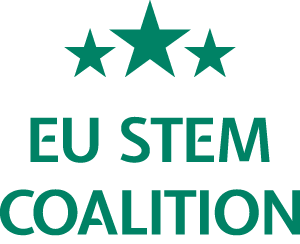EU STEM Coalition - General Assembly: Budapest
EU STEM Coalition - General Assembly: Budapest
Date:
04/26/2018
Country:
Hungary
Location:
Budapest
The first General Assembly meeting of 2018 took place in Budapest, Hungary. The meeting was co-hosted by Obuda University and followed the launch of the Hungarian STEM platform that took place the day before (April 25, 2018 – more info here). The thematic part of the meeting focused on emerging technologies.
Keynote: László Palkovics (Hungarian State Secretary for Education)
After a brief welcome by Tamás Kerszanski of Obuda University, a keynote speech was given by the László Palkovics (Hungarian state secretary for education). The keynote speech focused on the various science, technology, engineering and math (STEM) actions and programmes currently being implemented in Hungary and their outcomes, with a specific focus on the role of foreign companies in the Hungarian economy, current skill needs, underrepresentation of girls and the new Hungarian STEM platform (for more info, click here).
Video message: Tibor Navracsics (European Commissioner for Education, Culture, Youth and Sports)
After the keynote speech, a brief progress report was presented by Geert Asselbergs (coordinator of the EU STEM Coalition), including a presentation of the new members (the government of the Basque country, the Bulgarian education ministry and CESAER) and results since the last meeting. The progress report was followed by a welcome message via video by European Commissioner Tibor Navracsics (for video, click here). The video message emphasised the crucial role of the EU STEM Coalition in establishing structural triple helix cooperation on the national level as well as in realisation of the European Commission’s broader ambitions for a European Education Area.
Presentation #1: Danish Technology Pact, Mikkel Bohm (Director of ASTRA)
The second presentation of the day morning was given by Mikkel Bohm, director of the Danish STEM platform ASTRA and focused on the Danish Technology Pact, which was launched by four Danish ministers on April 24, 2018. The presentation described the entire 3-year development process (‘from idea to reality’) in which the (originally Dutch) Technology Pact format was adapted to the Danish context. Key points highlighted in the presentation were the focus on the ministry of business (rather than education) as ‘lead’ ministry and the 2017 agreement with the Danish regions and finally the proposed implementation plan.
Presentation #2: EU STE(A)M Coalition, Vladimir Garkov (Policy Officer, European Commission)
In a brief update, Vladimir Garkov of the European Commission presented the latest state of affairs regarding the EU STE(A)M Coalition action point from the 2017 Communication on a Renewed EU Agenda for Higher Education (in which the EU STEM Coalition was referenced) and the key competences review. During the presentation Vladimir Garkov invited all members of the EU STEM Coalition to provide their input for the (unconfirmed) launch event of the EU STE(A)M Coalition.
Updates and short presentations: Science on Stage Europe, University of Regensburg and Turkish STEM Alliance
Three short updates and presentations were given about relevant events and developments in the network. Verena Wagner of Science on Stage Europe presented the upcoming 2019 Science on Stage Festival in Portugal (more information here). Daniel Patrick Balestrini of the University of Regensburg (Germany) presented the Global Talent Mentoring Hub project. And finally Gultekin Gacmakci presented the Turkish STEM Alliance. The presentations Verena Wagner and Gultekin Gacmakci can be found in the meeting documents. For more info about the Global Talent Mentoring Hub, please contact Daniel Patrick Balestrini via daniel-patrick.balestrini@ur.de.
Discussion round
In a brief discussion round five topics were discussed. In group 1 and 2 the established platforms discussed the a range of issues related to best-practice sharing between national STEM platform and the current and future role of the EU STEM Coalition. In group 3, the various partners from France discussed the upcoming GA meeting in France later this year, its objectives, and the progress towards the establishment of a French STEM strategy. In group 4, the new organisations in the network (Bulgarian ministry of education, Basque government and Turkish STEM alliance) briefly discussed their objectives for joining the EU STEM Coalition. Finally in the fifth group the so-called ‘European partners’ (CSR Europe, Science on Stage Europe, FEANI and CESAER discussed how their respective networks of national members / partners can be closer aligned to the activities of the national STEM platforms and vice-versa.
Presentation #3: Artifex project, Dirk Timmermans (Coordinator Artifex)
In the final presentation of the day, Dirk Timmermans presented the Artifex project which originated from the Belgian city of Antwerp with its unique labour market conditions related to the presence of Europe’s second-largest port. Other challenges that set the context for the project were underachievenment in STEM, learning backlogs and a relatively high proportion of early school leavers compared to the average in Flanders. The objective of the Artifex project is to establish a practical European framework for STEM education in innovative out-of-the-classroom learning environments such as Fablabs or Makerspaces; small scale workplaces where students can develop projects using new technology such as 3D printing and laser cutting. The project consortium consists of partners from the United Kingdom, Belgium, Italy, Czech Republic, Greece, Bulgaria and Sweden. Key characteristics of the project are the focus on out-of-the-classroom learning places and teachers, the focus on process rather than simple best practice sharing and the collaboration between research, development and deployment. For more info, see: www.artifexlab.eu.





